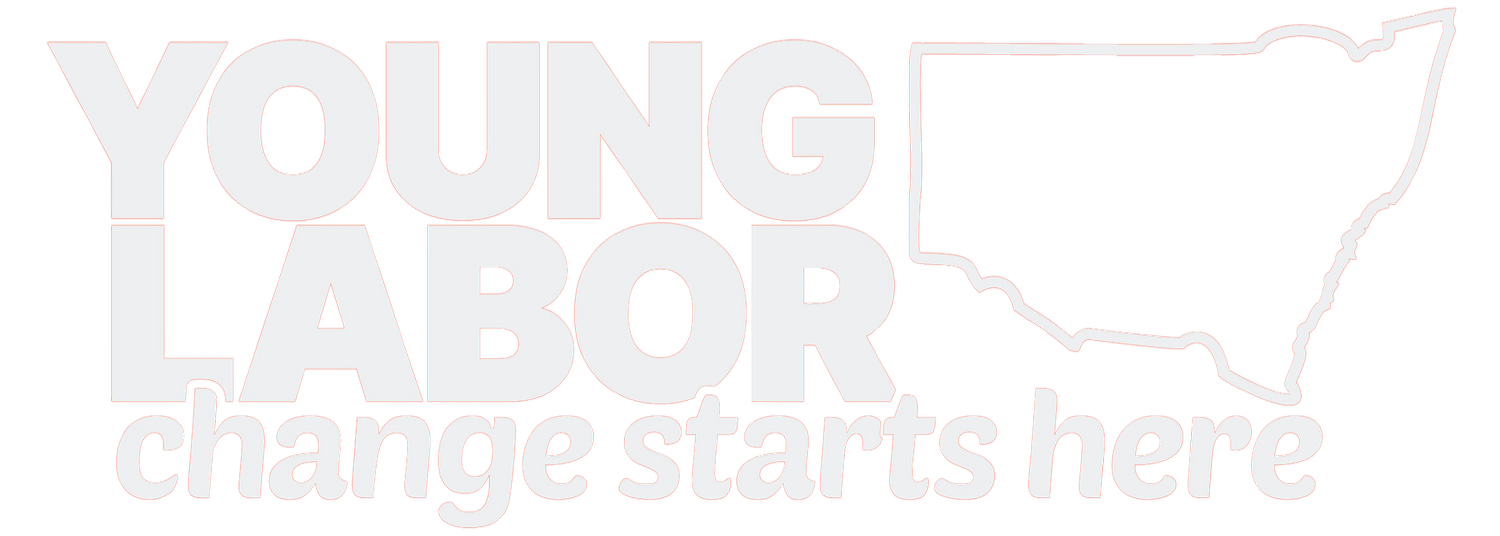Social Movements & Unions: More than History
“It is no point winning great wages and conditions if the world we build chokes us to death”
- Jack Mundey
I grew up in a union family where it was normal to come home to The Lamp, the newsletter of the NSW Nurses and Midwives Association, open on the kitchen benchtop. I often had conversations with my parents about the indignities of their working lives as nurses in public hospitals under a Coalition government, and the strength in numbers that being part of the union gave them to fight back and win decent pay and conditions. From an early age, my parents’ involvement in their union has driven my belief that they can empower ordinary people and change society like no other organisation can.
This is what inspired me to become a union organiser at the age of 19, representing some of the most vulnerable workers in the hospitality industry. It showed me that unions are at the industrial coalface with employers over wages and conditions, but as the only mass-member democratic organisations in our country we also need them to be at the forefront of leading social movements.
Sydney is home to one of the world’s greatest examples of social movement unionism. The period between 1968 to 1975 saw the imposition of 42 union bans on construction sites across the city by the Builders Labourers Federation (BLF). Not only did these bans completely reshape the physical layout of Sydney, but they transformed how people saw the power and nature of unions. Inspiring similar union actions across the world in the following decades, the Green & Pink bans of the BLF reveal the promise of unions not just to win better conditions for their members, but to act as the voice of the working class as a whole.
In June 1973, student Jeremy Fisher was expelled from a Church of England residential college at Macquarie University. He was informed by the college head that homosexuality was a perversion and that unless he accepted ‘treatment’ for it, he was out. The BLF voted to place a work ban on the construction of new buildings at the University, and it should be noted that it was not just a handful of radicals in the union leadership who endorsed this. It was voted on and endorsed unanimously by all building workers on site. Eventually, the ban led to the reversal of the decision of the college head.
Of course, much of the focus in this period was on the Green Bans where the BLF refused to work on developments which would displace local communities or destroy beloved amenities and greenspace. The Bans were met with mass support from the public. At the same time, the members of the union were winning massive wage increases and unprecedented safety improvements to their worksites. In the face of a protracted campaign against the union from employers, developers, the media, and even the Federal Union, the NSW Branch was eventually closed in 1975. Its spirit of militancy and social movement unionism is of course carried on by its successor union the NSW Construction & General Division of the CFMEU.
But what can we learn from this transformative moment in Australian history? It would be problematic to simply ascribe the militancy and industrial power of the BLF to only being the result of a handful of radical leaders at the top. In fact, it was exactly because the members of the BLF felt that they ran the union that it was so supportive of social movements.
Members felt ownership over the union and did not want to surrender the power they felt at work when they went home for the day. They lived in the local communities being blighted by corrupt developers, their friends and families were persecuted minorities, and they felt a duty to stand up for them. In other words, the power of the BLF as a social movement union flowed directly from democratic control of the union by workers. To strengthen our unions’ commitment to the social issues of our time, it must be true that we need to engage and convince union members that these are their issues too!
Trade unions remain the most democratic and deep-rooted organisations in our society and as Meredith and Verity Burgmann state they are “certainly more democratic in general than corporations, parliamentary parties and governments”. This presents an opportunity for not just us as Labor members, but the entire union movement to leverage our industrial strength to transform our society, just as the BLF did in previous generations. We must bind unionism to LGBT+ rights, environmentalism, Palestinian rights, and the other pressing social movements of our time.
But if we are to do this and overcome the great challenges of our times, we must ensure that union members know that it is their movement to lead.

